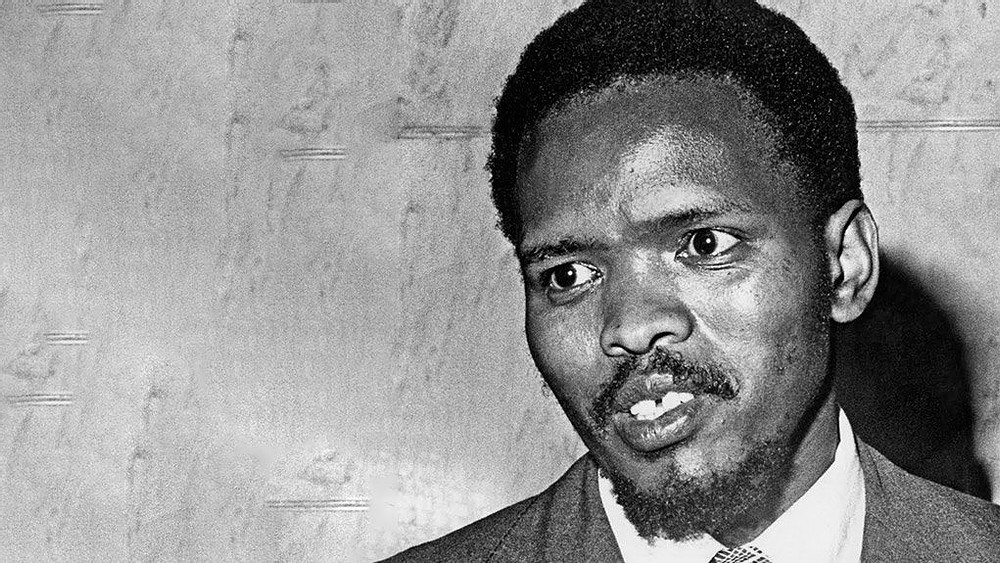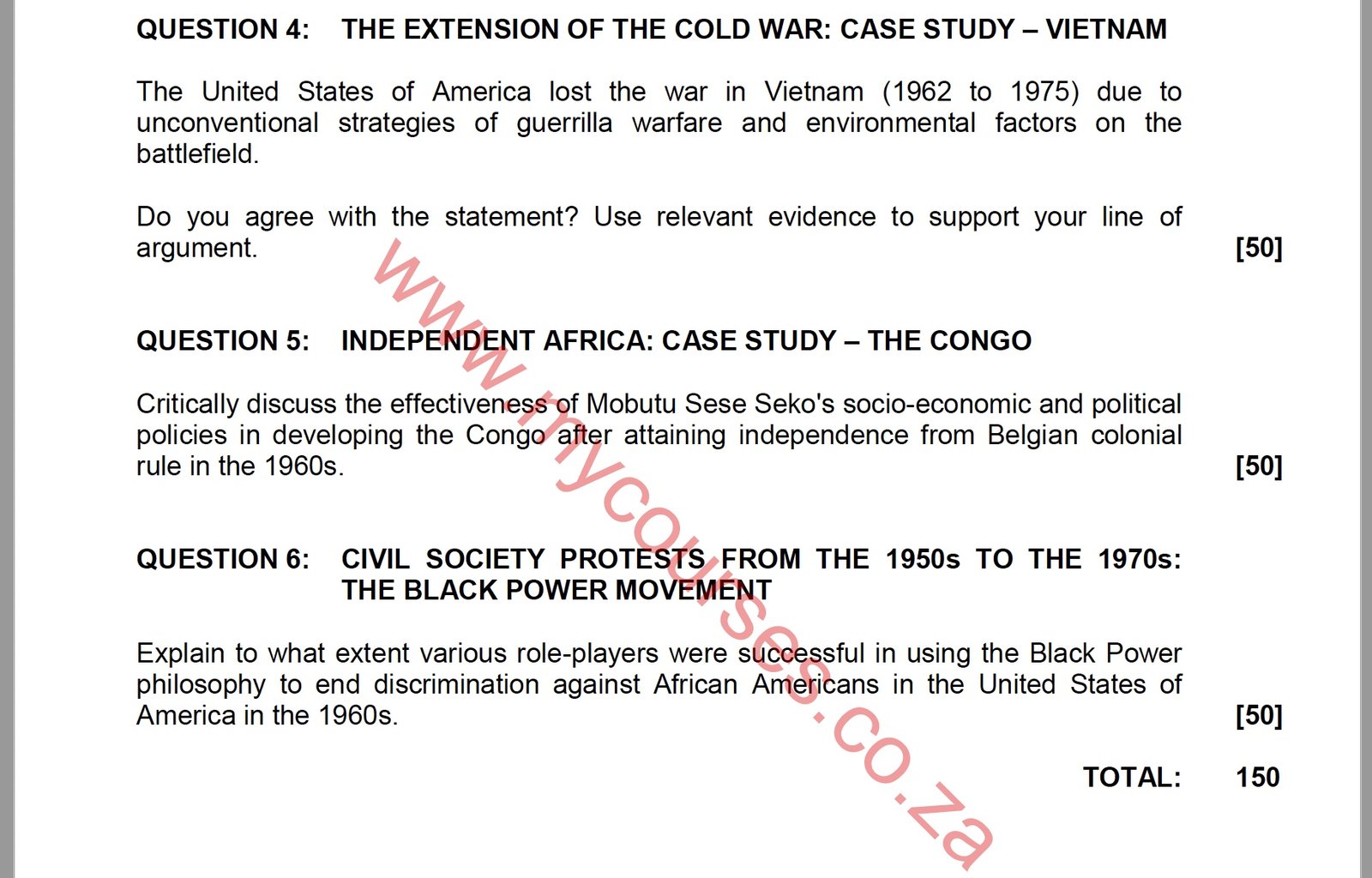History Grade 12 2023 November Final Exam Question Papers and Memos: History Grade 12 2023 November Final Exam Question Papers and Memos PDF for...
Independent Africa comparative case study: the Congo and Tanzania Essay for Grade 12 and Grade 11 History.
This page contains an answer guide to the below History Essay Questions (memo):
- What were the ideas that influence the independent states Congo and Tanzania?
After attaining independence Congo and Tanzania were faced with economic, social, and political challenges although there were successes that Mobuto and Nyerere gained in trying to improve the living standards for blacks.
Do you agree with this statement? Use appropriate evidence to support your argument.
[Plan and construct an original argument based on relevant evidence using analytical and interpretative skills.]
SYNOPSIS
Candidates should indicate whether or not they agree with the statement and support their answer with relevant historical evidence. Candidates must specifically look at the economic, social and cultural challenges facing both countries after independence.
MAIN ASPECTS
Candidates should include the following aspects in their response:
Introduction: Candidates should critically discuss the successes and challenges facing Tanzania and the Congo with specific reference to their economic, social and political development after gaining independence from colonial rule.
ELABORATION ECONOMY
- The Congo and Tanzania inherited a single-product economy from their colonisers.
- Tanzania followed a socialistic economic model.
- Congo followed a capitalistic model.
- Both countries struggled to develop their respective economies.
- Nyerere adopted an African Socialism model outlined in the Arusha Declaration which led to the nationalisation of industries and land.
- Its aim was to cut ties with Western countries and create self-sufficiency and self- dependency.
- Society would be stable and free of economic inequalities.
- Mobuto initially nationalised industries using the Zairianisation policy – which involved taking farms and businesses from the foreign owners who were replaced by Congolese.
- When it failed due to lack of skills and poor management he adopted a capitalistic model and returned businesses to foreign owners.
- Nyerere introduced Villagisation or Ujaama.
- A rural community with farming/collective labour.
- Lack of tools, water and management skills led to resistance which the police and military forces could not control.
- This led to destruction and abandonment of fields.
- Tanzania remained the poorest and most underdeveloped country.
- Tanzania reduced corruption of government officials through the “Leadership Code”.
- Both countries had to accept foreign aid and allow investments which Nyerere initially viewed as neo-colonialism.
SOCIAL CHALLENGES:
Education:
- Both countries inherited a colonial education system that promoted Eurocentric values
- Both countries were challenged by skills shortages; only a few technicians and engineers were available.
- Both countries were taught European history and languages, the African content was regarded as inferior and not taught. Tanzania:
- Promoted Swahili (local language) over English
- Introduced a massive literacy campaign that saw illiteracy drop drastically (from 80% to 20%) between 1961 and 1981
- Nyerere produced, ‘Education for Self-Reliance’ (1967) which promoted basic literacy in primary schools in all rural areas. Congo:
- Inherited only 14 university graduates
- Expanded its higher education system
- Increased primary education from 1,6 million to 4,6 million people between 1960 and 1974
- Unlike Swahili in Tanzania, French remained the language of instruction in Congo. Africanisation:
Villagisation (Ujamaa) in Tanzania embraced traditional community values based on self-reliance
Zairianisation in Congo replaced experienced Belgian human resources with local people and replaced European names with local names, e.g. Congo to Zaire
POLITICAL ASPECTS
Congo:
- Attaining independence through democratic elections (the Congo 1960) J. Kasavubu became President and P. Lumumba became the prime minister
- After holding multi-party elections at independence, the Congo became a one- party state within the first five years after gaining the independence
- Mobuto Sese Seko remained as president for life until his death in 2007
- Mobuto Sese Seko created a kleptocracy where a group of appointed public officials abused their position for financial gain
- Brought back African values
- Strong centralised government
- Political stability (though based on authoritarianism)
- Any other relevant response
Tanzania:
- Attaining independence through democratic elections (Tanzania 1961: J. Nyerere – amended the constitution to become President (1962)
- Smooth transition (peaceful change/racial harmony/commitment to promotion of human equality and dignity
- After holding multi-party elections at independence, it became a one-party state
- Nyerere remained as president between the 1960s and 1970s
- Nyerere introduced the Leadership Code in the Arusha Declaration which demanded high levels of integrity from public officials
- African socialism/ Ujamaa was appropriate for inhabitants
- Establishment of the United Republic of Tanzania (1964)
- Centralised and unitary state
- Any other relevant response Conclusion: Candidates should tie up their arguments with relevant conclusions.
Questions and Answers
My Courses has a large Questions and Answers repository for the most popular High School and Tertiary Schools subjects. This comes in handy when doing your revision or preparing for exams, tests, research tasks, and assignments.
Ask Us a Question and we will send you the Answer Guide
[super_form id=”33574″]







